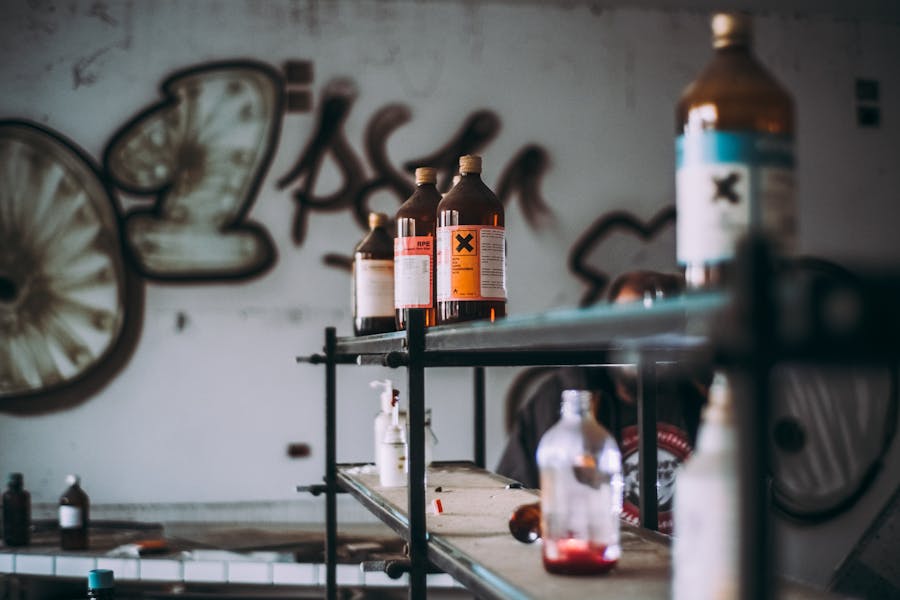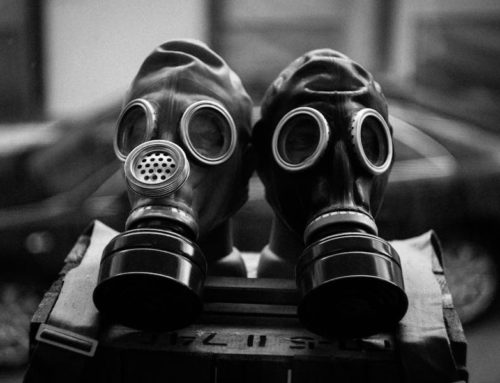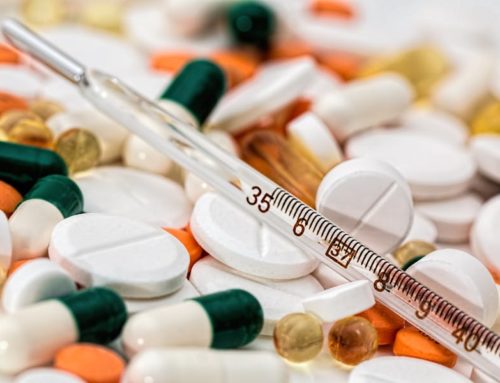We practice what’s called foundational medicine. We look at the very foundation of someone’s health and wellness — which, in this case, is the body. As with anything, you need a good, solid foundation on which to build your health. You wouldn’t construct a house on a rocky slope without doing some prep work first. You don’t run before you can walk. And you wouldn’t bake a cake in a dirty pan.
You have to start at the bottom and work your way up. Before you can treat their Hashimoto’s, headache, or heart condition, you need to get to the root of the problem and fix that.
That means that you should begin by working on the foundation. It’s just like priming the walls before you paint them. To start with, you look at the underlying issues that might be making them sick in the first place, and then you can begin to treat the symptoms.
The goal in the early stages is to achieve optimal organ function through detox and drainage, and to focus on energy and healing at the mitochondrial level. It’s also helpful to concentrate on providing good immune support so that the body is better able to recover on its own.
All of this should help you reach biological homeostasis. After all, a body in balance is easier to heal.
Germ Theory Versus Terrain Theory
In the medical world, the battle of germ theory versus terrain theory seems to be as hotly disputed as cat versus dog or chicken versus egg. Many people in functional medicine lean toward terrain theory.
Germ theory
Germ theory suggests that all disease is a result of “germs” — or usually, bacteria and viruses. We get exposed to them and they make us unwell. And because these things are contagious, we can pass them to other people and they become ill, too. It’s all about “catching a bug” and getting sick. (1, 2)
Then, germ theorists turn to medications and vaccines in hopes of killing the bacteria or virus. (2, 3)
Terrain theory
The terrain theory of medicine focuses less on germs as the cause of disease and more on our body’s reaction to them. The terrain, or environment, of our bodies plays a huge role in how healthy we are and how susceptible we are to illness. (3)
Terrain theory explains why sometimes, several people who are “exposed” to the same disease or conditions don’t have the same reaction and don’t all get sick. Everyone’s body behaves differently. It’s also why foundational medicine starts with getting the environment of our body ready to heal before beginning any treatment. (3)
Bacteria are not the enemy
The concept of terrain suggests that we don’t get exposed to bacteria, but rather, the bacteria are already inside us. In fact, bacteria actually outnumber us — we have around 37 trillion human cells in our bodies, and far more than that in bacterial cells — perhaps as many as 100 trillion. (3, 4, 5, 6)
In general, we have a symbiotic relationship with these bacteria and other parasites. Yes, they live off of us, but in return, they help us with things like brain function, cell creation, digestion, and protection against disease. (1, 4, 5)
For instance, around half the entire world’s population has H. pylori in their bodies. Although this bacterium is often associated with peptic ulcers, it may also protect against gastrointestinal and lung disorders, such as asthma and esophageal cancer. (7, 8)
- coli produces vitamins B12 and K and protects us by fending off unfriendly pathogens inside us. Bacteria are beneficial. (9, 10)
The gut microbiota
The term “microbiota” refers to the army of microorganisms that call our gastrointestinal system home, including 500-1,000 different species of bacteria, along with archaea, fungi, and viruses. These microbes have a range of helpful roles, including: (1, 5, 11, 12)
- Aiding with development of new blood vessels
- Assisting with digestion
- Helping with bile biotransformation
- Making nutrients such as vitamin K and folic acid
- Producing fatty acids that are necessary for a healthy gut
- Supporting nerve function
In addition, as shown by the “gut-brain axis,” the microorganisms within our gut also produce neurotransmitters and help control the development and function of the central nervous system. (1, 5, 13)
They support immune function and ward off aggressive pathogens that would harm us. As a result, they help fight conditions and diseases such as colon cancer, irritable bowel syndrome (IBS), and obesity, among many others. (1, 14)
The microbiota is so important to our health and so much an integral part of the human body that some call it the “forgotten organ.” Research has shown that infants who don’t cultivate sufficient gut microorganisms develop more diseases later in life. (1)
It’s no wonder that gut health is regularly associated with overall health and that a healthy gut means a healthy body.
Troubled terrain
When something goes wrong in the body, it alters the body’s terrain. And when their home is perturbed, the otherwise helpful bacteria and parasites get disturbed and aggravated, and that turns them into something harmful. Essentially, they turn on us. It’s a little bit like poking a sleeping bear with a sharp stick until he growls.
For example, if a body part dies, the bacteria are sent to the scene of the disaster to begin breaking down this body part — basically, what occurs during decomposition. As a result, illness and disease occur inside the body. (15, 16)
The same occurs in the gut. When the gut microbiota are living harmoniously with their human host, they are extremely advantageous to our health. However, when something interferes with their serenity, and their environment becomes off-kilter, they are suddenly capable of causing health problems throughout the body. (1, 5, 14, 16)
For instance, if someone has leaky gut or insufficient stomach acid, excess bacteria may grow in the small intestine, potentially leading to health disorders or sepsis. Sometimes, a person can develop an autoimmune reaction to the bacteria that are really there to help. Taking antibiotics can also kill off useful bacteria and allow dangerous pathogens to step in and harm us. (1, 14)
Changes in the microbiome can affect the immune, endocrine, and nervous systems, causing disorders such as autism, cancer, extreme depression, and inflammatory bowel disease (IBD). (5, 15, 16)
When their environment is disturbed, microorganisms have the ability to change completely through a process called pleomorphism. Pleomorphism is defined as “the ability of microorganisms to alter their biological functions, morphology, or reproductive modes in response to environmental conditions.” (17, 18, 19)
Pleomorphism could be the reason that you might have ongoing problems with parasites, even after they’ve gone through a parasite cleanse. It’s not that they suddenly have more parasites in their body, but rather, the number of harmful parasites could be on the rise.
The Root of All Disease
The major cause of parasite increase is toxins. Toxins change the terrain of the body by damaging tissues. In response, the microorganisms pleomorph into disease-causing organisms at the site of the damaged tissues.
So, according to terrain theory, we don’t get sick from microorganisms invading our bodies. Those microorganisms are already inside us, living peacefully until something comes along to stir things up. We’re exposed to toxins, not to germs — toxins are the true invaders, not the bacteria themselves. (3, 14)
That means that disease and illness are really caused by an imbalance in the body. When people are sick, they have a lot of pathogens and infections due to an immune dysfunction. Underneath that immune dysfunction lies the true culprit: exposure from a poison or toxicant that has altered the body’s environment, leading to a chain reaction of negative effects. (14)
That’s why in foundational medicine, it’s so important to get the foundation of the body balanced and in good shape first. Because toxins are the root of so many of our health issues, if we don’t address that toxicity at the foundational level, the body will continue to be a breeding ground for parasites — and not the helpful variety.
It can be a vicious, endless cycle of sickness, symptoms, and attempting to eliminate detrimental parasites, but without seeing positive results.
you can help change the environmental terrain of their bodies to help them get better. Cleansing the terrain by eliminating toxins means that you won’t be as prone to infections, nor to an excess of harmful, rather than benevolent, bacteria. It’s starting with a clean slate.
This can help not only with healing, but also with resistance to future toxins and disease.
Toxins
So, what toxins are we exposed to regularly that are messing up our body’s environment and leaving us vulnerable to disease?
Chemicals
Chemicals are everywhere. Certain chemicals we can avoid — we can limit pesticides by going organic, or use natural bug sprays and herbicides, or eat fresh foods to weed out hardcore chemicals like glyphosate and BPAs.
Yet chemicals are hiding in our beauty products, our household goods, and our water. They’re in foods where we least suspect them. They’re in plastics that make up so much of what we use every day. In fact, it’s estimated that nearly everyone (specifically, 98% of the population) in the U.S. has measurable levels of plastic in their systems. (20)
And when drinking water across the country was tested at random locations, 118 of the 120 sites tested showed levels of polyfluoroalkyl chemicals higher than the recommended maximum, along with lead. (21)
Nowadays, there are some 84,000 chemicals in regular use in the United States alone, at least 1,500 of which are endocrine-disrupting chemicals (EDCs). (6, 8)
EDCs interfere with our hormones and lead to developmental problems, infertility, obesity, and reproductive disorders. They can cause cancer and cognitive deficits. And obviously, they interfere with the body’s terrain and lead to immune dysfunction and illness. (6, 7, 8, 9)
According to some statistics, 10 million new chemicals are produced every year, which translates to 1,000 every hour. Although not all of these will make it into common use and cause exposure risks, the prevalence of chemicals and related toxicity is a major concern for our health. Chemicals can cause endless health concerns, ranging from cardiovascular disease and diabetes to cancer and neurological problems. (6, 7, 8, 9, 22)
No matter how clean you live, it’s impossible to avoid all these chemicals. The best defense against them is detoxing and keeping the body’s terrain in balance to be better equipped to deal with them wherever they turn up.
Heavy metals
There’s mercury in our dental fillings and the fish we eat. There’s aluminum in everything from our cosmetics to our cooking utensils, aspirin to antacids. Children’s toys, consumer products, and some paints are full of lead — as is our air, dust, soil, and water. And our poultry, mushrooms, rice, and seafood all contain arsenic. (23, 24, 25, 26, 27, 28)
When metals in a toxic state get inside our bodies, they change the environment there in a way that weakens our immune system and allows bacteria to harm us.
Lead envelops our mitochondria, preventing them from producing energy-carrying ATP. This results in fatigue and other issues. Arsenic causes cancer, cardiovascular disease, diabetes, and neuropathy, while aluminum is known to kill brain cells. And mercury, which also loves the brain, causes several mental health issues. (29, 30, 31)
These are just a few of the many toxic heavy metals to which we are exposed every day. Only with proper detox can we keep our bodies stabilized enough to have a fighting chance against their damaging effects.
Mold
Mold is nearly as prevalent as chemicals and heavy metals, and just about as dangerous. Mold spores produce toxic compounds known as mycotoxins that usually enter the body either through inhalation or via contaminated food. (10)
Whatever organs and tissues they contact, mycotoxins destabilize the terrain and make the body more sensitive to illness. Specifically, they are known to cause allergic reactions, cellular damage, and inflammation. This most frequently affects the immune, nervous, and respiratory systems. (10)
When mycotoxins are absorbed via the mouth or nose, they can cause:
- Airflow obstruction
- Bloody noses
- Conjunctivitis
- Cough
- Fever
- Lip inflammation
- Mouth sores
- Nasal irritation
- Sore throat
As the poisons continue to disrupt the body’s environment and immune function, symptoms worsen and may result in: (10, 32)
- Asthma
- Blindness
- Blood problems
- Cognitive deficits
- Lung congestion and swelling
- Pneumonia
- Pulmonary hemorrhaging
Nearly 22 million people have asthma in the United States, and around 4.6 million of them are suspected to have contracted asthma via exposure to dampness and mold. (10)
To test the dangers of breathing mold toxins, researchers injected particles of the toxic black mold Stachybotris into the nasal passages of mice. The result was inflammation, irritation, and atrophy of the nose and brain. (10)
Similar results were discovered with tests on rat and mouse lungs. When injected with black mold spores, the animals showed lung inflammation and hemorrhage, and many didn’t survive the study. (10)
Radioactive elements
Another terrain-changer in the body is radioactive elements. This is a major health concern that takes many different forms.
For example, research has found radioactive elements in the drinking water of more than 170 million Americans. On top of that, 158 public water systems in 27 different states were found to have radium levels exceeding federal limits. For that reason, experts recommend drinking distilled water, which is safe and contaminant-free. (33, 34)
Radioactive elements or radiation can also come in the form of electromagnetic fields or frequencies (EMFs). These are emitted from our Bluetooth devices, cellphones, laptops, microwaves, televisions, WiFi, and other electric and electronic devices and systems. These gadgets produce EMFs that interfere with our body’s own electric and energy fields, including our meridians, metabolism, and nerve impulses. (11, 12, 13)
Because EMFs disrupt how our bodies are “wired,” they effectively alter the body’s environment and open it up for disease. EMFs change our chemical balance, damage our enzymes, and interfere with cell division. This can lead to health problems such as: (11, 12, 13)
- Cardiovascular disease
- Depression and anxiety
- Premature aging
- Reproductive problems
- Tumors
Additional toxins
Other types of toxins that can cause changes in bacteria include: (14, 15, 16)
- Emotional toxins triggered by divorce, financial issues, loss of a loved one, stress, etc.
- Nutritional deficiencies
- Physical injury or accident
- Tissue death
Detox First
Whether you believe in the germ theory or the terrain theory (or some combination of the two), it’s still important to get at the root cause of your patients’ illnesses. This involves ridding their bodies of any toxins that could be impairing their ability to get better.
The body cannot naturally eliminate harmful parasites if a toxic terrain is offering an ideal environment for those parasites to thrive. That’s why it’s so important for foundational medicine to get at the underlying issues and clean up the terrain.
Through cleansing, detox, and drainage, you can ensure that your patients have a biological environment that’s ready for wellness. Deal with toxicity before treatment.







